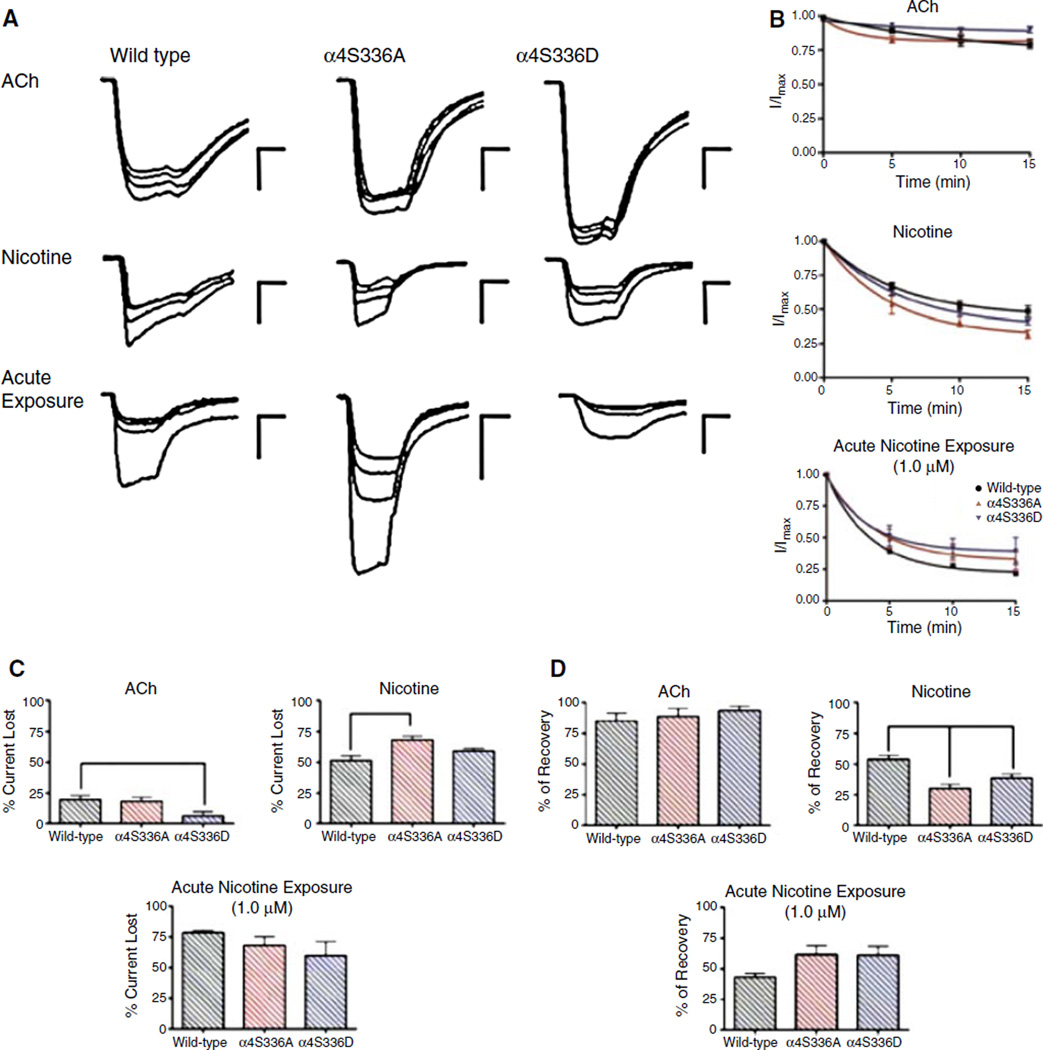Fig. 2.
ACh- and nicotine-induced desensitization of mutant α4β2 nAChRs. (a) Family of current traces for wild-type, α4S336A, and α4S336D α4β2 nAChRs representing the response to consecutive applications of agonist. The macroscopic responses to four consecutive applications of 300 µM ACh or 30 µM nicotine were recorded for each α4β2 subtype tested. Oocytes were washed with MOR2 buffer between each agonist pulse for 5 min (a total of three washes for four agonist applications). The protocol of acute nicotine exposure experiment consisted of measuring the current induced by four consecutive applications of 300 µM ACh. Between each ACh application, the oocyte was washed with 1.0 µM nicotine-containing MOR2 for 5 min. Calibration bars are shown at the right of each current family, 500 nA (vertical bars) and 8 s (horizontal bars). (b) Graphs illustrating the macroscopic response decay with respect to time of agonist exposure; wild-type in black, α4S336A in red, and α4S336D in blue. (c) Bar graphs showing the average percentage of current lost after repetitive applications of agonist. (d) Percent recovery of the original macroscopic response after 20 min of agonist withdrawal for wild-type, α4S336A, and α4S336D α4β2 nAChRs. Statistical analyses were performed using one-way ANOVA with Dunnett’s multiple comparison test (*P < 0.05; **P < 0.01; ***P < 0.001). Data were obtained from 7 to 29 oocytes

